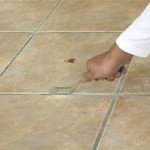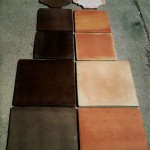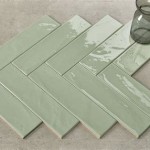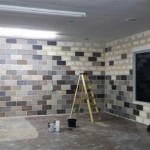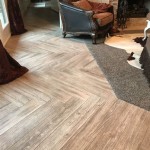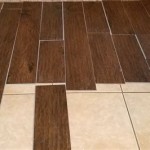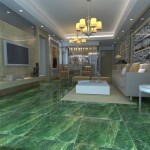What Board Do You Use For a Tile Shower?
Selecting the appropriate backer board for a tiled shower is a critical decision that directly impacts the long-term performance and integrity of the installation. The primary function of the backer board is to provide a stable, waterproof, and mold-resistant substrate to which the tile can be adhered. Choosing the wrong board can lead to moisture penetration, tile detachment, and costly repairs. Several types of backer boards are available, each with its own advantages and disadvantages. Understanding these differences is essential for making an informed choice that will ensure a durable and aesthetically pleasing shower installation.
Cement Board: The Industry Standard
Cement board, also known as cement backer board (CBU), has been a long-standing industry standard for tile shower installations. It is composed of cement reinforced with fiberglass mesh, creating a dense and rigid material. This composition makes it inherently waterproof and resistant to mold and mildew growth. Cement board offers exceptional durability and can withstand significant moisture exposure without degrading. It is also resistant to impact and provides a strong surface for thin-set mortar adhesion.
One of the primary advantages of cement board is its versatility. It can be used on walls, floors, and ceilings of shower enclosures, providing a consistent substrate throughout the installation. It accepts a wide range of tile types, including ceramic, porcelain, and natural stone. Cement board is also compatible with various waterproofing methods, allowing for flexibility in shower design and construction.
However, cement board does have some drawbacks. It is a heavy material, which can make it challenging to handle and install, especially on larger projects. Cutting cement board requires specialized tools, such as a scoring knife or a carbide-tipped saw blade, and generates a significant amount of dust. Proper ventilation and respiratory protection are necessary when working with cement board. Seams between cement board panels must be properly taped and mudded to prevent water infiltration, adding an extra step to the installation process.
Despite these challenges, cement board remains a reliable and cost-effective option for tile shower installations, particularly for experienced tile installers who are familiar with its properties and installation techniques.
Foam Board: Lightweight and Waterproof
Foam board, also referred to as foam backer board, has gained popularity in recent years as an alternative to cement board. It is constructed from a rigid foam core, typically made of expanded polystyrene (EPS) or extruded polystyrene (XPS), which is then coated with a reinforced cementitious layer or a waterproof membrane. This construction results in a lightweight and inherently waterproof material.
The primary advantage of foam board is its ease of handling and installation. It is significantly lighter than cement board, making it easier to transport and maneuver, particularly in confined spaces. Cutting foam board is also simpler, typically requiring only a utility knife or a saw. This reduces the amount of dust generated during installation and simplifies the cutting process. The inherent waterproof nature of foam board eliminates the need for additional waterproofing measures in many cases, streamlining the installation process.
Foam board offers superior thermal insulation properties compared to cement board. This can contribute to energy savings by reducing heat loss through the shower walls. It also provides a smoother surface for tile adhesion, which can improve the overall aesthetics of the finished installation.
However, foam board is typically more expensive than cement board. It is also less rigid and impact-resistant, which may make it unsuitable for high-traffic areas or installations where heavy objects may come into contact with the shower walls. Some types of foam board may require specific types of thin-set mortar for tile adhesion, so it is important to consult the manufacturer's recommendations before installation.
Foam board is a suitable option for DIYers and professional installers looking for a lightweight, waterproof, and easy-to-install backer board. It is particularly well-suited for smaller shower enclosures and renovations where ease of handling is a priority.
Glass Mat Gypsum Board: An Alternative Option
Glass mat gypsum board is another alternative backer board option for tile shower installations. It consists of a gypsum core faced with fiberglass mats, providing enhanced moisture resistance compared to standard gypsum wallboard (drywall). The fiberglass mats create a durable and water-resistant surface that is suitable for wet environments.
The main advantage of glass mat gypsum board is its ease of installation. It is lighter and easier to cut than cement board, requiring standard drywall tools and techniques. It also readily accepts paint and other finishes, making it a versatile option for various design applications. Glass mat gypsum board is also relatively inexpensive compared to other backer board options.
However, it’s critical to note that glass mat gypsum board is *not* inherently waterproof. It is moisture-resistant, meaning it can withstand some exposure to water, but it is not designed to be continuously submerged or exposed to standing water. Therefore, it *must* be used in conjunction with a waterproofing membrane or system to ensure that the shower enclosure is properly protected from water damage.
The choice of waterproofing membrane is crucial. Liquid-applied membranes, sheet membranes, or other approved waterproofing methods must be applied according to the manufacturer's instructions to provide a continuous and impermeable barrier behind the tile. Proper detailing around penetrations, such as showerheads and faucets, is also essential to prevent water infiltration.
Furthermore, the long-term performance of glass mat gypsum board in a shower environment depends heavily on the quality and application of the waterproofing membrane. Any breaches or failures in the membrane can lead to moisture penetration and damage to the gypsum core, potentially resulting in mold growth and structural deterioration. Therefore, careful attention to detail and adherence to best practices are essential when using glass mat gypsum board in a tile shower installation.
Glass mat gypsum board with a properly installed waterproofing membrane can be a viable option for certain shower installations, particularly when cost is a major consideration. However, it requires a higher level of care and expertise to ensure a long-lasting and water-tight shower enclosure. It is often preferred where the rigidity of cement board is not required and ease of cutting and fastening is desired, provided proper waterproofing protocols are strictly followed.
Considerations for Choosing a Backer Board
When selecting a backer board for a tile shower, several factors should be considered to ensure the best possible outcome. These include the type of tile being used, the size and configuration of the shower enclosure, the level of moisture exposure, and the installer's skill level. The specific requirements of local building codes and manufacturer's recommendations should always be taken into account.
The type of tile being used can influence the choice of backer board. Larger and heavier tiles may require a more rigid substrate, such as cement board, to prevent sagging or cracking. Natural stone tiles, which are often porous, may require a backer board with exceptional moisture resistance to prevent staining or damage. The grout joint size should also be considered, as wider grout joints may allow more water to penetrate the substrate.
The size and configuration of the shower enclosure can also affect the choice of backer board. Smaller showers may benefit from the ease of installation offered by foam board or glass mat gypsum board, while larger showers may require the durability and water resistance of cement board. Complex shower designs with multiple angles and curves may require a more flexible backer board that can be easily shaped and cut.
The level of moisture exposure is a critical factor to consider. Showers that are used frequently or have poor ventilation may require a backer board with superior water resistance. In such cases, foam board or cement board with a waterproofing membrane may be the best option. Areas that are subject to standing water, such as shower floors, should always be protected with a waterproof membrane, regardless of the type of backer board used.
The installer's skill level is also an important consideration. Cement board requires more expertise to install properly, while foam board and glass mat gypsum board are generally easier to work with. If hiring a contractor, it is important to verify their experience with the chosen backer board and ensure that they are familiar with the proper installation techniques. It is also important to consider the long-term maintenance requirements of each type of backer board.
Ultimately, the best backer board for a tile shower is the one that meets the specific requirements of the installation, taking into account the type of tile, the shower design, the level of moisture exposure, and the installer's skill level. Careful planning and attention to detail are essential for ensuring a successful and long-lasting shower installation.

Cement Backer Board For Shower A Pro Busts All The Myths

Proper Way To Set Wallboard For Shower

Cement Backer Board For Shower A Pro Busts All The Myths

Here S How Install A New Shower Stall With Tile Floor

What Is The Best Backer Board For A Shower

The Best Way To Waterproof Your Shower Before Tiling Inspired Hive
Drywall And Cement Board For The Downstairs Bathroom Blog Homeandawaywithlisa

Installing Cement Board In The Bathroom

Wetroom Shower Tray Tile On Able Backer Cement Board For

Diy Bathroom Remodeling Part 4 Cement Board For Shower Walls
Related Posts

